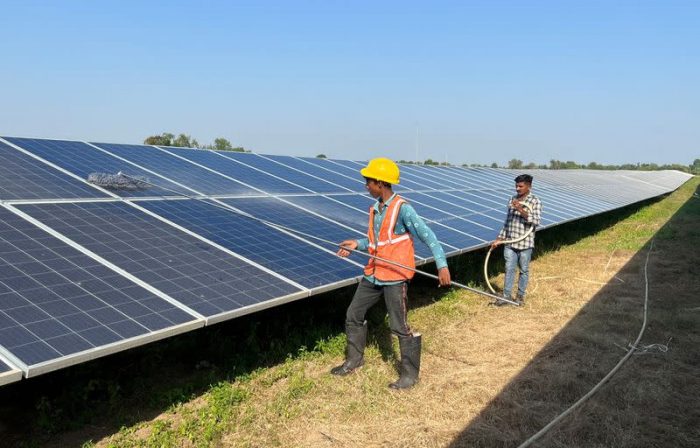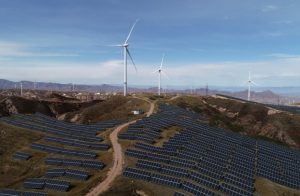India will hook up a record amount of renewably-sourced power to its grid over the next few months as it accelerates its efforts to meet its clean energy targets.
The world’s most populous country will connect 35 gigawatts (GW) of solar and wind energy capacity to its network during the year ending March 2025, after falling short of a much publicised 2022 renewables goal.
The world’s fastest growing major economy has in recent years prioritised coal to address a surge in power demand, and growth in coal-fired power output is still expected to outpace renewable energy generation this year.
Commissioning of large solar farms has slowed in recent years and that resulted in solar power generation growing at its slowest pace in six years during the first half of 2024.
However India, the world’s third largest solar power producer, now expects that to change starting this fiscal year, when it sees the addition of 30 GW of solar capacity, Bhupinder Singh Bhalla, the top bureaucrat at India’s Ministry of New and Renewable Energy said.
Also on AF: Japan Nears China Chip Curbs Deal With ‘Bad Cop, Very Bad Cop’ US
The country will also add about 5 GW of new wind capacity, he said. India added a total of 10 GW of renewable capacity in April-August, the first five months of this fiscal year, taking its total to about 153 GW, government data showed.
“We cannot provide an exact number for next year [2025-26], but we will definitely overtake this year’s capacity [addition],” Bhalla said on the sidelines of RE-Invest, India’s biggest renewable energy conference.
Bhalla also said there was a “lot of market demand for battery-linked storage projects,” adding that more tenders for such projects can be expected going forward.
India is still 13% short of a pledge made by Prime Minister Narendra Modi at the UN climate talks in Paris in 2015 to increase its renewable energy capacity to 175 GW by 2022.
It is the world’s third largest greenhouse gas emitter, although per capita emissions from its population of about 1.5 billion people are among the lowest among major economies.
The south Asian nation will need to add about 30% more clean capacity every year than the expected wind and solar additions this fiscal year to achieve its end-2030 target of increasing its non-fossil power capacity to 500 GW, underscoring the challenges in meeting its clean energy goals.
Renewable energy minister Prahlad Joshi said financial institutions have pledged to provide $386 billion in funding for renewable projects by 2030, adding that clean energy developers have committed to boost India’s non-fossil capacity by 570 GW.
Separately, Indian conglomerates Reliance Industries committed 100 GW of additional renewable capacity by 2030, while Adani Green Energy committed 38.8 GW of capacity.
- Reuters with additional editing by Sean O’Meara
Read more:
India Generates Fifth of World’s Plastic Emissions – SCMP
Indian Oil Tycoon Says New Energy Will Earn As Much As Refineries
Climate Change ‘Fuelled’ Rain That Led to Fatal Indian Landslides
China, India Ask Rich Nations For ‘Trillions’ in Climate Finance
























